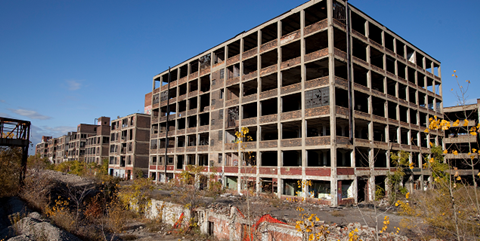By many measures, the current economic expansion in the US has been slow.

Inflation-adjusted gross domestic product (GDP), for example, has grown by an average of 2.1% per year since the recovery began - about half the pace of previous expansions.
However, that does not mean that every region has been uniformly sluggish - far from it. There have been pockets of extraordinary strength across the country.
While total US employment has increased by 11.3% (or 14.7 million jobs) since reaching rock bottom in February 2010, a handful of cities have grown nearly twice as fast.
Ten cities have seen total employment increase by more than 20% in the past six-and-a-half years. In New York, employment has increased by more than 650,000 in this time - the most jobs the city has ever added during any single expansion.
It should come as no surprise that the majority of the cities experiencing strong employment growth have one thing in common: tech. Most of these cities are centres of the latest technology boom sweeping through the economy.
Take San Francisco. Since February 2010, employment there has increased its ‘nonfarm’ (goods, construction and manufacturing) payrolls by 21.2% as job gains exceeded 400,000. According to Moody’s Analytics, employment in technology industries in San Francisco represented 11.4% of all the city’s jobs in 2015, more than double the average US proportion of 4.8%.
Tech jobs lead the way
In fact, of the 10 fastest-growing cities in the US since February 2010, five have technology employment concentrations more than double that of the US as a whole, including Silicon Valley in California (27.3% tech jobs); Raleigh/Durham, North Carolina (11%); and Austin, Texas (9.8%). Where there is tech, there is generally strong employment growth.
This strong job growth has resulted in strong growth in property markets. As employment has risen, vacancy rates have fallen and rents have surged in most tech-centric markets.
In the second quarter of 2016, the national office vacancy rate in the US was 13.4%. Of the dozen cities with the lowest vacancy rates nationally, half were tech-centred, including such stalwarts as Seattle (8.9% vacancy rate), Austin (9%) and Raleigh/Durham (8.8%).
![]()
With low availability comes upward pressure on rental rates, rising property values and new development. In San Francisco, where the vacancy rate is 7.3%, asking rents have increased by 10% over the past year.
In Silicon Valley, they are up by an extraordinary 28%. The vacancy rate in Manhattan’s Midtown South is 6.5%, the lowest in the nation, and rents have risen 15% over the past 24 months.
Higher rents in many tech markets are helping to boost property values. In Boston, the average price per square foot for office properties has more than doubled since 2010, according to Real Capital Analytics. The same goes for San Francisco.
Improvement in these property markets has helped boost development. Several tech-driven markets are in the midst of a major construction boom. In Seattle, Washington, current construction makes up 9.4% of the market inventory. In San Francisco it is 6.2%, Austin 3.5% and Silicon Valley 3.4%. Across the US as a whole, new construction represents 2.2% of existing inventory.
Cyclical sector
Is there a risk here? Possibly. The property sector is one of the most cyclical in the entire economy because of the nature of its product. Buildings started will often take one or two years to complete.
During that time a lot can change, as we have seen in past cycles. The tech sector, which is now driving a lot of the demand in several cities, spectacularly went bust in 2001/2002.
Cities relying too heavily on one industry can be more vulnerable to sharp declines when or if that industry hits a rough patch. Just look at Detroit or Houston.

But the current tech boom does not appear to be fading yet. Excesses one normally sees in a bubble, including but not limited to over-exuberant investment, excessive borrowing and valuations well above market norms, do not appear to be widespread, yet.
That could change. But for now, the tech sector is a key driver of growth in certain regions of the US and is having a major impact on property markets across the country.
Tara Stacom is executive vice-chairman at Cushman & Wakefield





























No comments yet